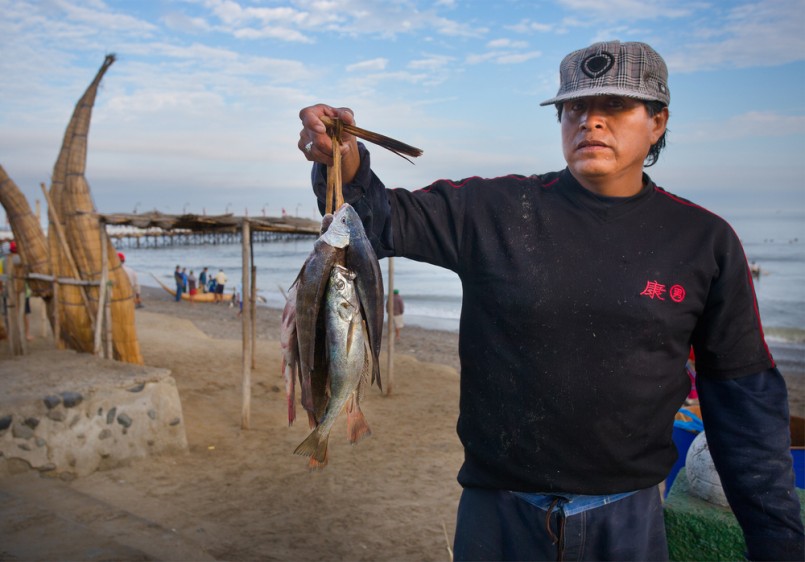Cultures
Protecting the world’s last indigenous cultures could save life on earth
It is no easy battle protecting the rights of indigenous people living in the untouched areas of the world. The murders of Honduran human rights defender Berta Caceres and Ecuadorian indigenous rights and anti-mining activist José Isidro Tendetza Antún prior to that, as well as anti-logging campaigner Edwin Chota and others before that are sufficient examples enough—although only a few of many. For as vehemently as the indigenous wish to remain left alone in their remote home regions, those who wish to exploit them for the rich resources of their lands are just as voraciously chomping at the bit. From illegal loggers to drug traffickers, miners, multinational oil and gas companies and those who wish to clear the land for agriculture appear to see that land as up for grabs and most suitably theirs—even though International Law “recognizes the Indians’ land as their own to use as they wish.”
Although most indigenous tribes in the above named regions of the rainforest prefer to keep to themselves and make it known in various ways, something is causing them to emerge and make contact with outside human groups—groups they’ve been silently watching, but primarily avoiding, for a very long time. Why are they coming out even though their preference is to remain safely hidden in their tribal homes, protected from the potential health threat and even death of first contact with outside groups? Perhaps because they aren’t so safe in there anymore. Reports of brutal murders of the indigenous occurring in the tribal areas have come out, and the assailants still remain at large.
Meanwhile, in Peru during this past month, gold mining activity (a major cause of deforestation in Peru’s Amazon) is putting the area’s environmental resources at risk in multiple ways. According to the president of the regional indigenous organization, ORPIAN-P., Edwin Montenegro, “70,000 indigenous Awajúns and Wampís are at risk from such mining operations because of the impacts on the forests, biodiversity and rivers, which they depend on for their lives and livelihoods. Our way of washing is using the river, the streams, and we drink from them too. That’s why it’s important that we can’t allow mining. [The miners] extract gold from the river, they put in the mercury, that’s what the fish drink, and then that’s what we could eat. That’s why there’s so much concern about it. In addition, they’re taking out trees, they’re chopping them down. The biological diversity, flora and fauna. . . All disappearing.”
At the same time, with mining operations being near some remarkably poor village areas, some of the village inhabitants are showing receptivity to the idea of working for the miners in hopes to alleviate their own poverty, and are thus less resistant to their operations, even when obviously illegal and ultimately contaminating the local environment. According to DAR (Derecho Ambiente y Recursos Naturales) consultant Claudia Ramirez Farro, “In order to understand this complex situation it must be taken into account that these are areas of extreme poverty,” Ramirez Farro says. “Money is scarce and so illegal activities like logging or mining sometimes happen in indigenous territories with the “permission” of a particular group that hopes to benefit in some way.” Also unfortunate in this way is the tricking and auctioning of young girls to the miners for prostitution, a new low for the area.
Aside from the urgency to protect indigenous cultures for their own sake, a push toward protecting them for the sake of preserving the species-rich ecosystems of rainforests for all of humanity’s sake seems equally crucial. Since the Center for Biological Diversity reports deforestation as a major component of the currently ongoing sixth mass extinction of our planet, we should probably get involved on a larger scale in defense of these regions. According to scientist Wayne Walker, “The territories of Amazonian indigenous peoples store almost a third of the region’s aboveground carbon. That is more forest carbon than is contained in some of the most carbon-rich tropical countries, including Indonesia and the Democratic Republic of the Congo.”
In addition, and likely the point of greatest urgency in the issue is, as stated by the area’s Woods Hole report, “Failure to protect this land…raises the odds of “dieback,” a dreaded feedback loop scenario in which climate change causes wilting forests to begin releasing their own carbon. Releasing the carbon currently at risk in Amazon [indigenous territories] alone — equivalent to clearing all of Peru’s forests — would increase the probability of Amazon dieback, with deleterious and potentially irreversible effects on the atmosphere and the planet.”
If we don’t get involved for any other reason, there is the ultimate destruction of the planet as a final result. Perhaps we should confront our governments and industry leaders to let them know how we feel about these matters sooner than later.






0 comments